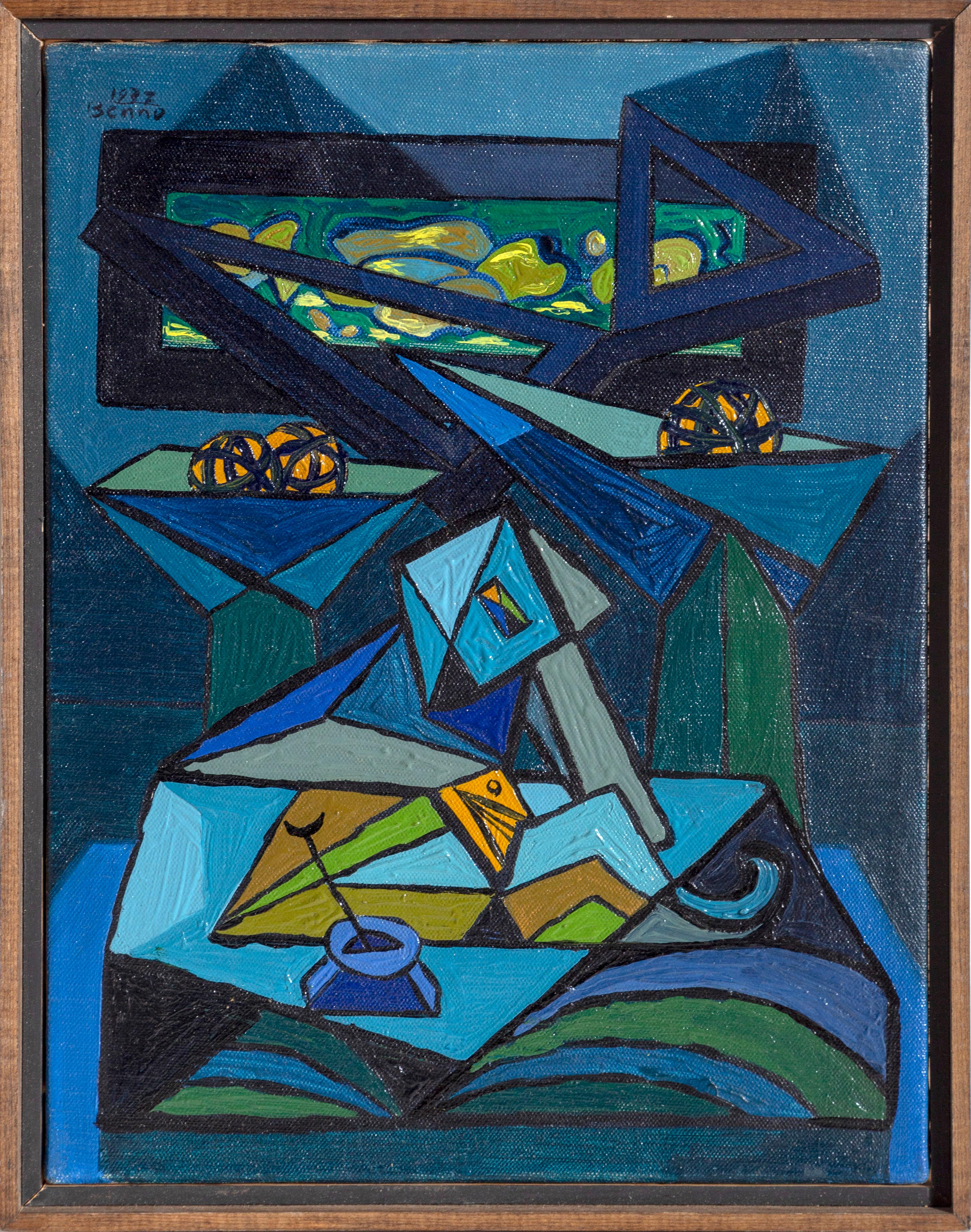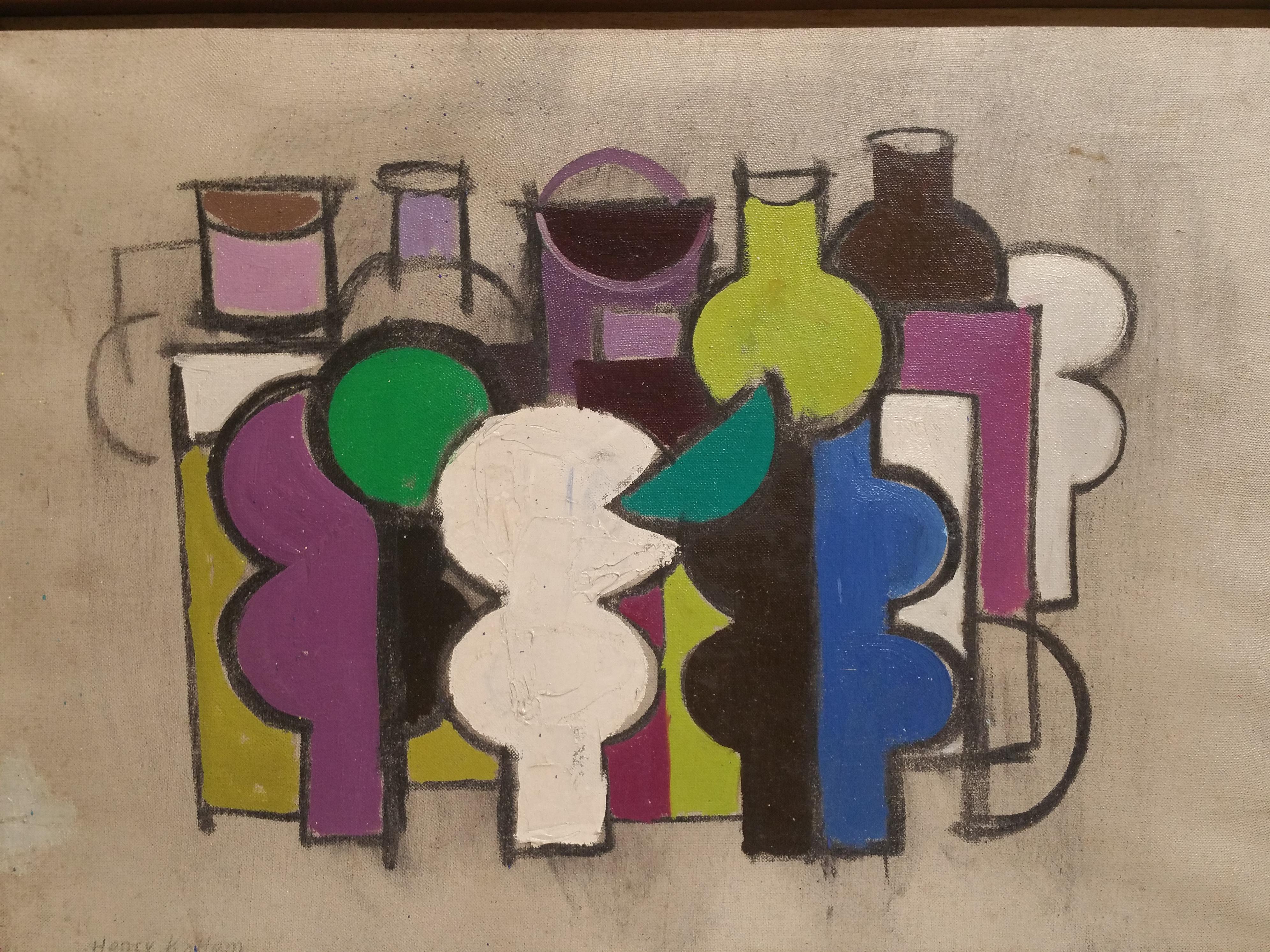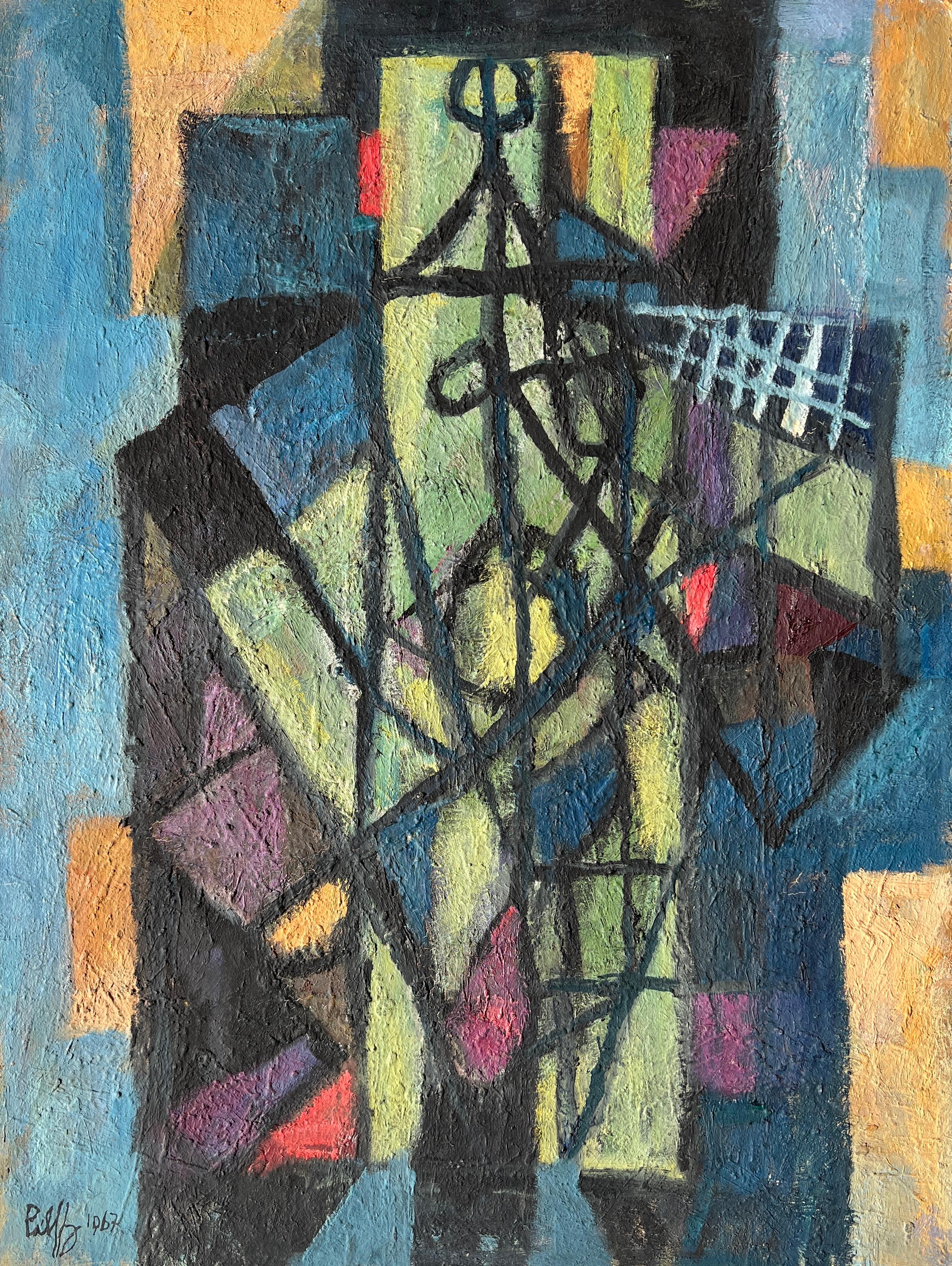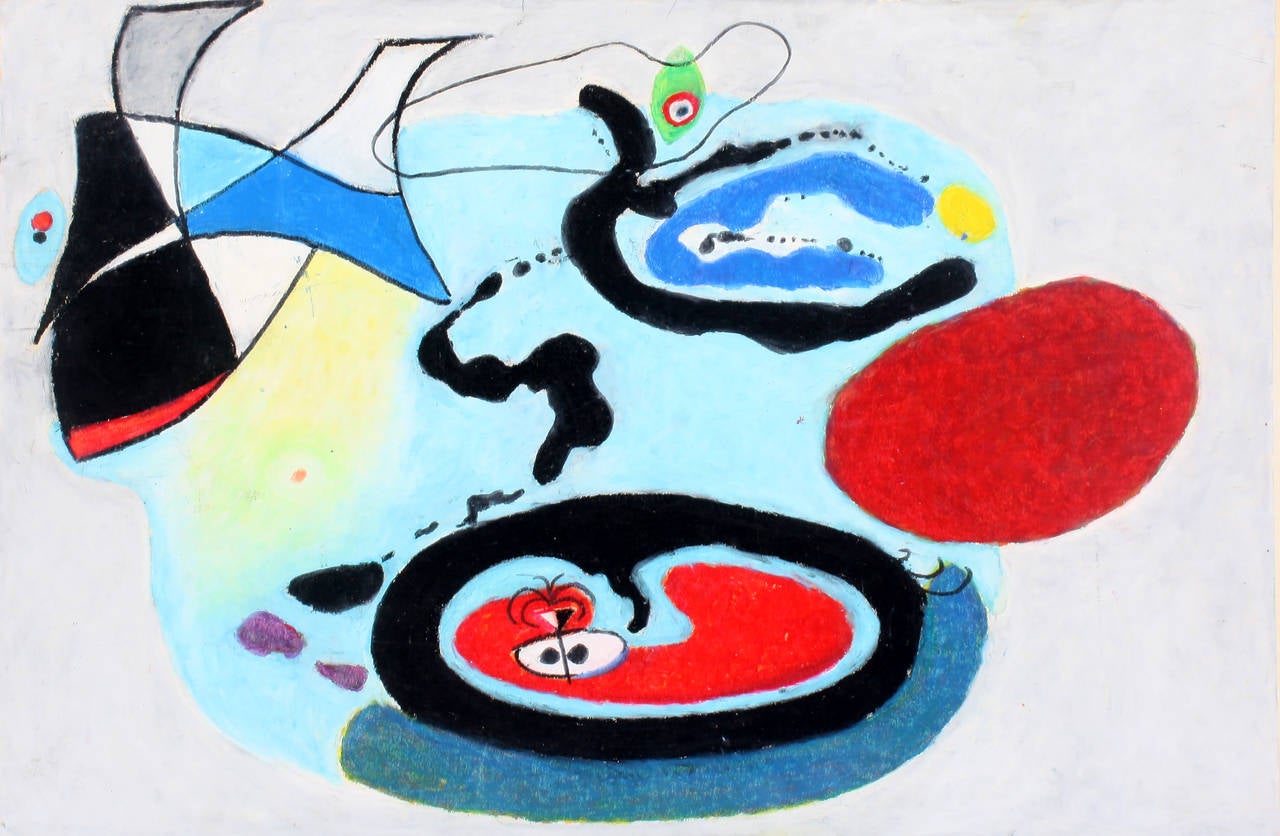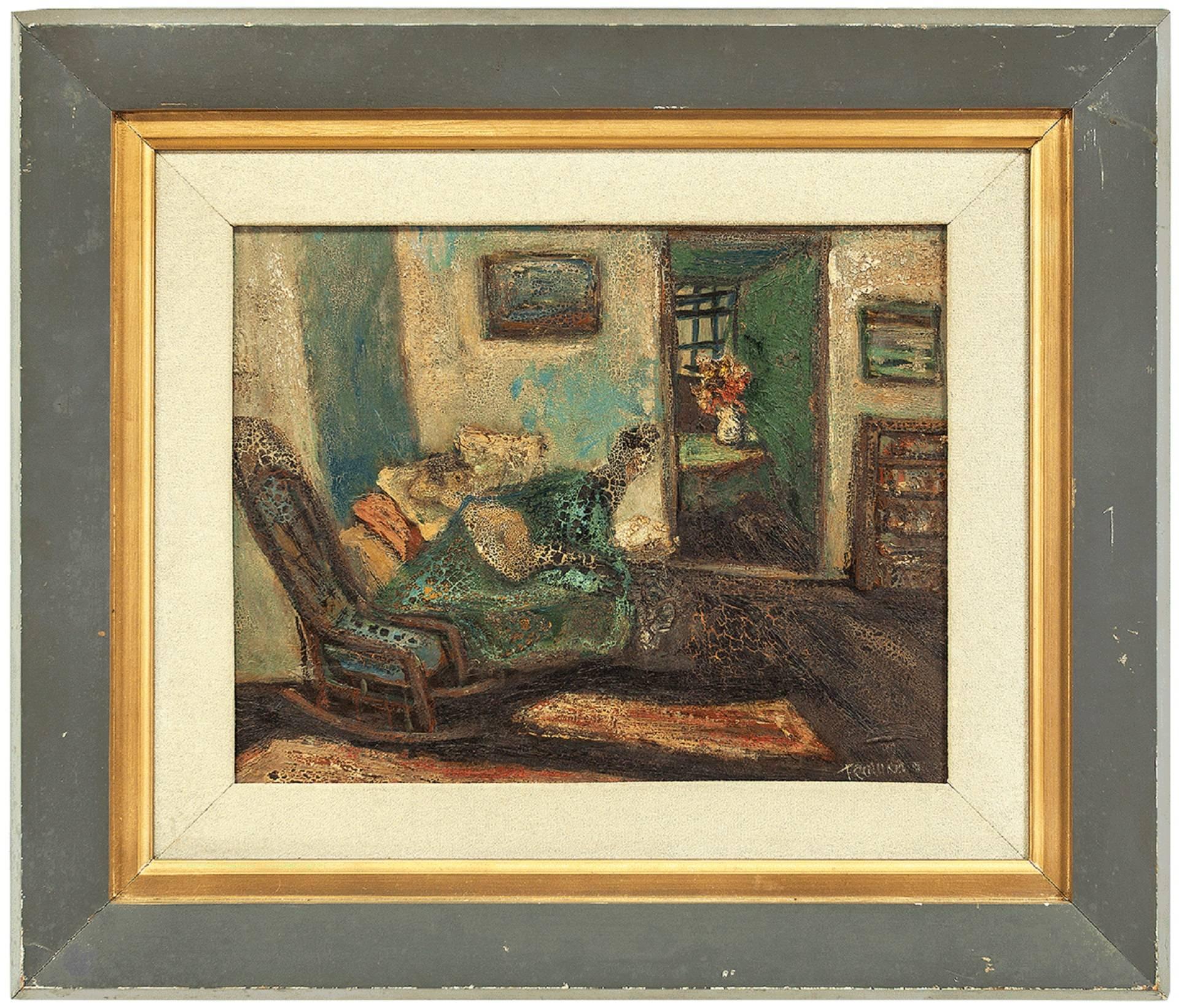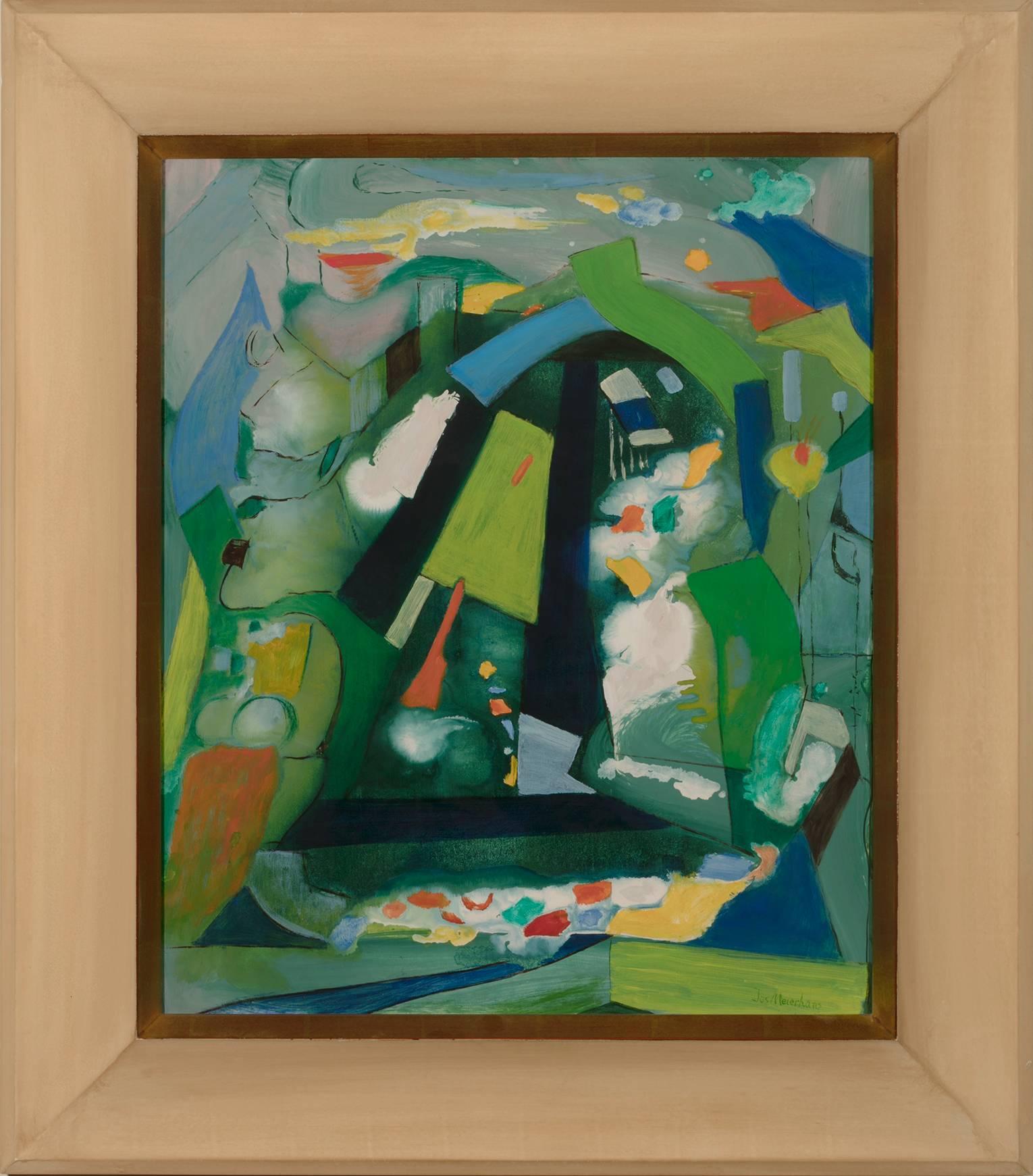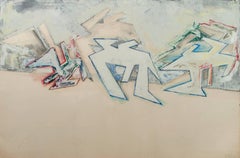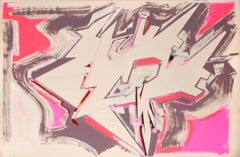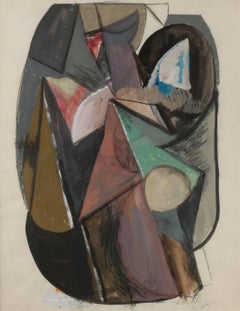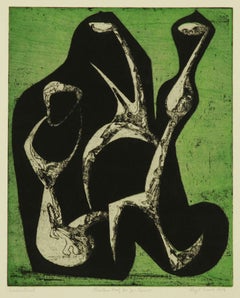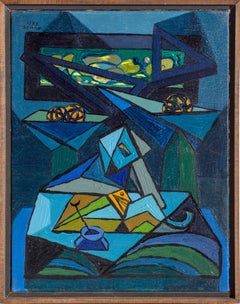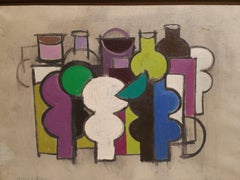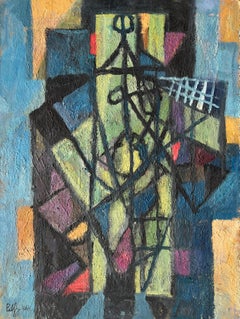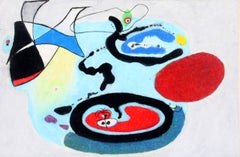Want more images or videos?
Request additional images or videos from the seller
1 of 15
Benjamin G. BennoInterieur No. II1937
1937
$8,500
£6,590.65
€7,474.75
CA$12,184.38
A$13,250.79
CHF 6,980.82
MX$160,933.41
NOK 87,762.94
SEK 82,270.67
DKK 56,118.31
About the Item
Interieur No. II
Oil on canvas, 1937
Signed on verso (see photo)
nscribed on reverse:
Benno 1937
"Interieur" (No. II)
35 x 27 cm
9 rue Compagne Premiere
Paris 14e
Provenance: Estate of the artist
Ruth O'Hara, Lang & O'Hara, New York
Jem Hom Fine Art, Washington & New York
Canvas size: 13 3/4 x 10 3/4 inches
Frame: 18 1/2" x 15 1/4" x 1 3/4 inches
This painting was created in Paris in 1937. During this time, Picasso was Benno's friend and mentor. It was Picasso who gave Benno the necessary money to leave Paris as the Nazi's invaded and started rounding up the Jews for extermination.
This painting is signed and inscribed on the verso (see photo)
It was exhibited at:
Benjamin Benno: A Retropsective Exhibition, Zimmerli Art Museum, 1988
This painting is illustrated and sited on page 19 of the catalog (see photo).
A copy of the catalog accompanies the painting.
Exhibitions:
New Brunswick, NJ, Jane Voorhees Zimmerli Art Museum, September 11- November 20, 1988: "Benjamin Benno: A Retrospective Exhibition," , No. 55
Bibliography:
Donna Gustafson, Benjamin Benno (New Brunswick, NJ; Jane Voorhees Zimmerli Art Museum, 1988), reproduced p. 19
Benjamin Benno was regarded as a child prodigy. In 1912 his formal training began with Robert Henri and George Bellows in New York. He studied at the progressive Ferrer School known for its emphasis on freethinking and association with the anarchist movement. For eight years he traveled throughout the world painting and gaining confidence in his art.
Financed by collectors, Benno moved to Paris in 1926. He briefly returned to New York in 1931 and upon receiving a Guggenheim Fellowship immediately returned to Paris where he remained until 1939. By the early 1930s he had established a reputation as a member of the international avant-garde and exhibited with the most significant European artists including Paul Klee, Max Ernst, Wassily Kandinsky, Salvador Dalí, Joan Miró, Hans Arp, and Fernand Léger. Pablo Picasso sponsored Benno's first one-man show in Paris in 1934.
With the outbreak of war in 1939, Benno returned to New York along with many artist exiles. In America, his eccentric nature and experimental paintings were received harshly by critics. Enraged by this reception, Benno became bitter and hostile. Galleries and museums were disturbed by his temperament and Benno’s presence in the art world waned.
Benno spent his last years buying back his works and preparing his papers for posterity. The paintings in this exhibition exemplify a man passionately committed to his art and convinced of his place in history.
This exhibition features major works from the 1930s when Benno was living in Paris and regarded as a distinguished member of the cultural avant-garde.During this time, Benno became acutely aware of the Modernists and reflected various avant-garde movements in his work. The principles of Surrealism, Cubism and Constructivisim influenced Benno, yet his strong personality imbued his art with a distinctive quality.
Courtesy Michael Rosenfeld Gallery
- Creator:Benjamin G. Benno (1901-1980, American)
- Creation Year:1937
- Dimensions:Height: 13.75 in (34.93 cm)Width: 10.75 in (27.31 cm)
- Medium:
- Movement & Style:
- Period:
- Condition:Original condition.
- Gallery Location:Fairlawn, OH
- Reference Number:Seller: FA46461stDibs: LU14014955882
About the Seller
5.0
Recognized Seller
These prestigious sellers are industry leaders and represent the highest echelon for item quality and design.
Platinum Seller
Premium sellers with a 4.7+ rating and 24-hour response times
Established in 1978
1stDibs seller since 2013
819 sales on 1stDibs
Typical response time: <1 hour
Associations
International Fine Print Dealers Association
- ShippingRetrieving quote...Shipping from: Fairlawn , OH
- Return Policy
Authenticity Guarantee
In the unlikely event there’s an issue with an item’s authenticity, contact us within 1 year for a full refund. DetailsMoney-Back Guarantee
If your item is not as described, is damaged in transit, or does not arrive, contact us within 7 days for a full refund. Details24-Hour Cancellation
You have a 24-hour grace period in which to reconsider your purchase, with no questions asked.Vetted Professional Sellers
Our world-class sellers must adhere to strict standards for service and quality, maintaining the integrity of our listings.Price-Match Guarantee
If you find that a seller listed the same item for a lower price elsewhere, we’ll match it.Trusted Global Delivery
Our best-in-class carrier network provides specialized shipping options worldwide, including custom delivery.More From This Seller
View Alluntitled
By Dennis Ashbaugh
Located in Fairlawn, OH
Untitled
Mixed media on paper, 1979
Signed and dated ‘79 lower right (see photo)
Sheet size: 31 1/2 x 48"
Frame: 34 1/4 x 50 1/4"
Provenance:
Members Gallery, Albright-Knox Art Galle...
Category
1970s Abstract Abstract Paintings
Materials
Mixed Media, Oil
Untitled
By Dennis Ashbaugh
Located in Fairlawn, OH
Untitled
Mixed media on paper, 1981
Signed and dated 1981 lower left (see photo)
Provenance:
Knoedler Gallery, New York (label)
Charles Cowles Gallery, New York
The Collection of Jan...
Category
1980s Abstract Abstract Paintings
Materials
Mixed Media, Gouache
Untitled
By Leon Kelly
Located in Fairlawn, OH
Untitled Cubist Abstraction
Signed and dated lower right
Watercolor, charcoal and gouache on paper, 1922
Provenance: Estate of the Artist
Schroeder, Romero & Sh...
Category
1920s Cubist Abstract Paintings
Materials
Charcoal, Watercolor, Gouache
$20,000
Enchantment
By Ray H. French
Located in Fairlawn, OH
Signed, dated, titled, and annotated 'Printers Proof' in pencil
References And Exhibitions:
Printed by the master printer John Clemmens.
Exhibited by the Brooklyn Museum in ...
Category
1950s Abstract Prints
Untitled
By Peter Marks
Located in Fairlawn, OH
Acrylic on canvas embedded with glitter and gold leaf
Unsigned, as per usual
Provenance:
Estate of the artist
Sheet: 14 x 17"
Peter Marks (1935 -2010...
Category
Early 2000s Abstract Expressionist Abstract Paintings
Materials
Gold Leaf
Untitled
By Peter Marks
Located in Fairlawn, OH
Untitled
Acrylic and gold leaf collage on canvas, 2005
Unsigned
Provenance: Estate of the Artist
Condition: Excellent
Image size: 10 13/16 x 8 5/8 inches
Support Sheet size: 17 x 14 ...
Category
Early 2000s Abstract Abstract Paintings
Materials
Acrylic
You May Also Like
Interieur No. 1, Cubist Painting by Benno 1937
By Benjamin G. Benno
Located in Long Island City, NY
An original oil on canvas of a cubist still life by Benjamin Benno, American (1901 - 1980). By the early 1930s he had established a reputation as a member of the international avant-...
Category
1930s Cubist Interior Paintings
Materials
Oil, Canvas
Price Upon Request
Still Life
By Henry Kallem
Located in Saratoga Springs, NY
Signed lower left & titled verso.
A printmaker and painter in abstract style who used wide brush marks, Henry Kallem was born in Philadelphia. His father was Morris Kallem, a portrait painter, with whom he studied, and his brother was sculptor Herbert Kallem...
Category
1960s Modern Still-life Paintings
Materials
Canvas, Oil
$3,000
Abstract composition
Located in Genève, GE
Work on wood
Category
1960s Abstract Abstract Paintings
Materials
Oil
Untitled
Located in Buffalo, NY
An unsigned mid century modern American abstract painting
Category
1950s American Modern Abstract Paintings
Materials
Board, Illustration Board, Oil
$750
Abstract Interior Scene
By Abram Tromka
Located in Surfside, FL
Measures 16.5 X 20 without frame. heavy craquelure. it seems like some sort of experimental technique the artist used. paint is stable. please see photos Abram Tromka was born May 1, 1896 in Poland. At the age of seven he immigrated with his family to the United States, settling in New York City. It was on the boat coming to New York where Tromka first became interested in art. Fascinated by a woman who was painting, he decided that he wanted to become an artist. Upon arrival at immigration headquarters, Tromka’s family adopted the surname “Phillips,” which he kept until 1930. Hence the artist’s early works bear the signature — ‘A. Phillips.’
Having a rough childhood, Tromka left home at 15 and spent the remainder of his teenage years living at the Henry Street...
Category
20th Century Modern Abstract Paintings
Materials
Oil, Board
"Tarus"
By Joseph Meierhans
Located in Lambertville, NJ
Jim’s of Lambertville is proud to offer this artwork.
Signed Lower Right
Joseph Meierhans (1890 - 1980)
Joseph Meierhans is one of the most important modernist painters associate...
Category
20th Century Abstract Abstract Paintings
Materials
Masonite, Oil
$15,650
More Ways To Browse
Jew Painting
4 X 4 Paintings
Painting Of A Man
19th Century Portrait Of A Man
John Born
Spanish Oil Painting Still Life
Sky And Water
Old Man
Battle Paintings
Black Girl
Morning Light
Twenty First
Vintage Seascape Painting
Georgian Oil Paintings
Copy Painting
19th Century American Portrait Paintings
Old Master Landscape Painting Large
Winter Scene Oil On Canvas
